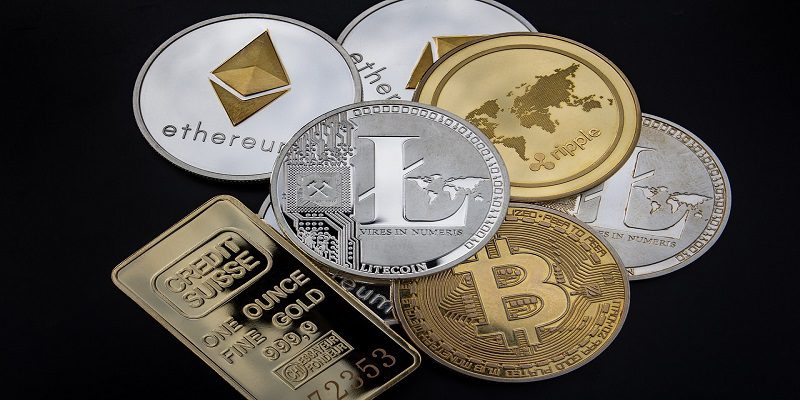Litecoin (LTC) mining has become an increasingly popular way for individuals to earn this cryptocurrency. As one of the leading digital currencies, Litecoin offers unique advantages and opportunities for those looking to venture into the world of mining. In this comprehensive guide, we will walk you through the essential steps of Litecoin mining, providing valuable insights and tips to help you maximize your mining efforts.
Understanding Litecoin Mining
Litecoin mining is the process of validating transactions on the Litecoin blockchain by solving complex mathematical problems. Miners use powerful computer hardware to compete against each other in solving these problems, and the first one to solve it gets the privilege of adding a new block to the Litecoin blockchain. In return, the miner is rewarded with newly minted Litecoins, as well as transaction fees from the verified transactions.
Step 1: Acquiring the Right Hardware
The first step in Litecoin mining is to acquire the necessary hardware. Unlike Bitcoin, which primarily relies on ASIC (Application-Specific Integrated Circuit) miners, Litecoin can still be mined using consumer-grade hardware. However, it’s essential to have a powerful graphics processing unit (GPU) to compete effectively. Popular choices include GPUs from NVIDIA and AMD, such as the NVIDIA GeForce GTX series or the AMD Radeon RX series.
Step 2: Setting Up a Litecoin Wallet
Before you start mining, you’ll need a wallet to store the Litecoins you earn. Choose a reliable and secure Litecoin wallet that suits your needs. There are various options, including hardware wallets, software wallets, and online wallets. Make sure to keep your wallet address secure and accessible, as this is where your mining rewards will be sent.
Step 3: Joining a Mining Pool
Solo mining can be challenging and may take a long time to see any returns. To increase your chances of earning consistent rewards, consider joining a Litecoin mining pool. Mining pools are groups of miners who combine their computational power to increase the likelihood of solving blocks and earning rewards. Popular Litecoin mining pools include Litecoinpool.org, F2Pool, and Antpool.
Step 4: Downloading and Configuring Mining Software
Once you’ve chosen a mining pool, download and install mining software compatible with your hardware. Examples of popular mining software for Litecoin include CGMiner, EasyMiner, and Awesome Miner. Configure the software with your mining pool details and wallet address to ensure that your rewards are correctly attributed.
Step 5: Tweaking and Optimizing
To maximize your mining efficiency, consider tweaking and optimizing your mining setup. Adjust the intensity settings of your GPU to find the right balance between performance and power consumption. Stay informed about the latest mining software updates and Litecoin network changes to ensure you are always using the most efficient tools available.
Step 6: Monitoring and Maintenance
Regularly monitor your mining operation to ensure it is running smoothly. Keep an eye on your hardware temperatures, hash rates, and potential issues. Perform routine maintenance, such as cleaning dust from your GPU fans and updating your mining software, to keep your setup optimized.
Step 7: Understanding the Rewards
Litecoin mining rewards consist of newly minted Litecoins and transaction fees. The current reward for successfully mining a block is 12.5 Litecoins, with a halving event occurring approximately every four years, reducing the reward by half. Stay informed about upcoming halving events and be prepared for potential changes in your mining rewards.
Step 8: Managing Electricity Costs
Mining can be energy-intensive, so it’s crucial to consider electricity costs in your mining strategy. Calculate the energy consumption of your mining rig and compare it to the potential earnings. Some miners choose to operate during times of lower electricity costs or explore renewable energy sources to make their mining activities more sustainable.
Step 9: Staying Informed
The cryptocurrency landscape is dynamic, with changes in technology, regulations, and market trends. Stay informed about Litecoin developments, network upgrades, and any changes that may affect your mining operation. Engage with the Litecoin community through forums, social media, and reputable news sources to stay ahead of the curve.
Challenges of Litecoin Mining
Litecoin mining, like any form of cryptocurrency mining, comes with its set of challenges. These challenges can impact the profitability, sustainability, and overall experience of miners. Here are some key challenges associated with Litecoin mining:
- Increased Difficulty Levels
As more miners join the network, the difficulty level of mining Litecoin increases. This is due to the network’s automatic adjustment mechanism, which aims to maintain a consistent block generation time. Higher difficulty levels mean that miners need more computational power to solve the complex mathematical problems and compete for block rewards.
- Rise of ASIC Miners
While Litecoin was initially designed to resist domination by ASIC miners, these specialized mining rigs have become more prevalent. ASICs (Application-Specific Integrated Circuits) are highly efficient but also expensive, making it challenging for GPU miners to compete. This shift has made it harder for the average miner to participate competitively in Litecoin mining.
- Energy Costs
Mining cryptocurrencies, including Litecoin, can be energy-intensive. The electricity costs associated with running mining hardware can significantly impact profitability. As electricity prices fluctuate and increase, miners need to carefully manage their operational costs to remain profitable.
- Hardware Costs and Availability
Acquiring and maintaining high-performance mining hardware, such as powerful GPUs or ASICs, can be expensive. Moreover, due to the demand for such hardware in the cryptocurrency mining industry, there may be shortages or delays in obtaining the necessary equipment. This can hinder the ability of miners to scale their operations.
- Market Volatility
Cryptocurrency prices, including Litecoin, are highly volatile. The value of mined Litecoins can fluctuate significantly, affecting the overall profitability of mining. Miners who don’t promptly convert their mined coins into fiat currency may face risks associated with market downturns.
- Network Congestion
During times of increased network activity, such as when there’s a surge in transactions, the Litecoin network may become congested. This congestion can lead to delays in transaction processing and may impact the speed at which miners receive their rewards.
Conclusion
Litecoin mining can be a rewarding venture for those willing to invest time, effort, and resources into building and optimizing their mining setup. By following this step-by-step guide, you are equipped with the knowledge to start your Litecoin mining journey. Remember to stay informed, adapt to changes in the crypto landscape, and continually optimize your mining operation for the best results. Happy mining.



































